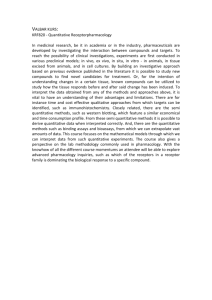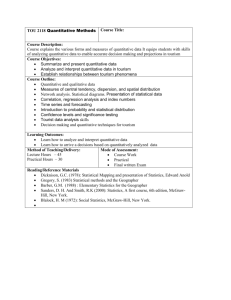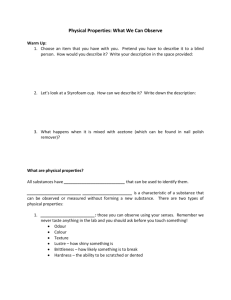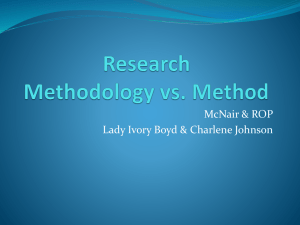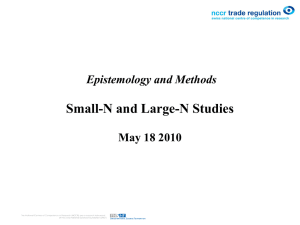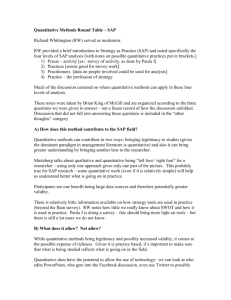guidelines for quantitative skills courses
advertisement
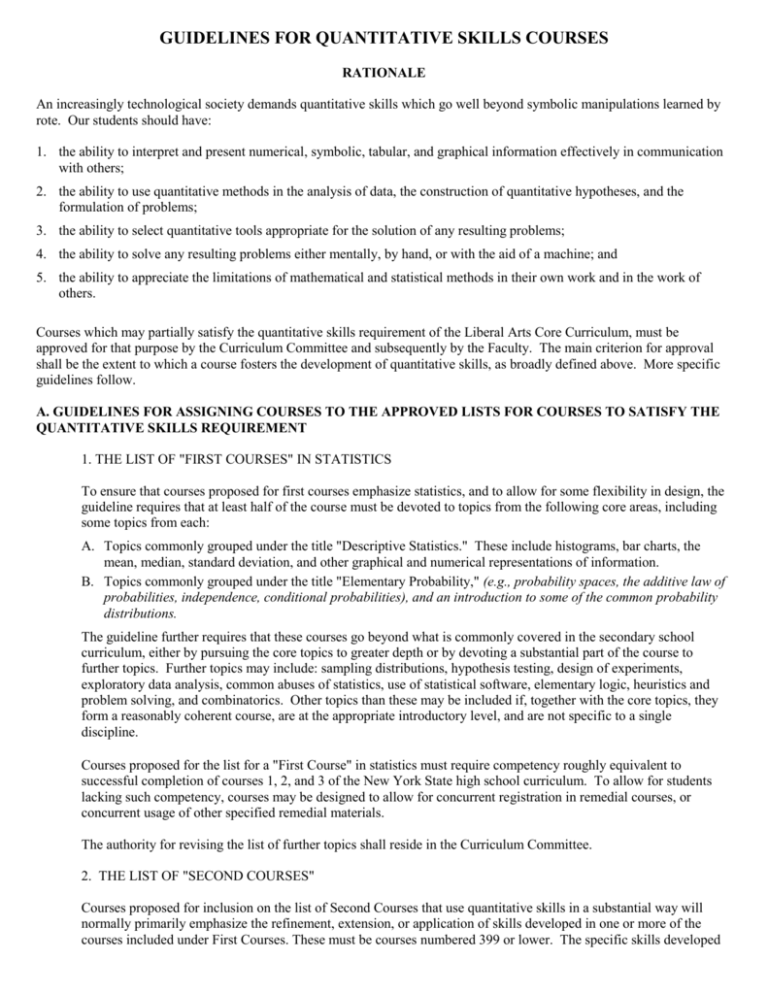
GUIDELINES FOR QUANTITATIVE SKILLS COURSES RATIONALE An increasingly technological society demands quantitative skills which go well beyond symbolic manipulations learned by rote. Our students should have: 1. the ability to interpret and present numerical, symbolic, tabular, and graphical information effectively in communication with others; 2. the ability to use quantitative methods in the analysis of data, the construction of quantitative hypotheses, and the formulation of problems; 3. the ability to select quantitative tools appropriate for the solution of any resulting problems; 4. the ability to solve any resulting problems either mentally, by hand, or with the aid of a machine; and 5. the ability to appreciate the limitations of mathematical and statistical methods in their own work and in the work of others. Courses which may partially satisfy the quantitative skills requirement of the Liberal Arts Core Curriculum, must be approved for that purpose by the Curriculum Committee and subsequently by the Faculty. The main criterion for approval shall be the extent to which a course fosters the development of quantitative skills, as broadly defined above. More specific guidelines follow. A. GUIDELINES FOR ASSIGNING COURSES TO THE APPROVED LISTS FOR COURSES TO SATISFY THE QUANTITATIVE SKILLS REQUIREMENT 1. THE LIST OF "FIRST COURSES" IN STATISTICS To ensure that courses proposed for first courses emphasize statistics, and to allow for some flexibility in design, the guideline requires that at least half of the course must be devoted to topics from the following core areas, including some topics from each: A. Topics commonly grouped under the title "Descriptive Statistics." These include histograms, bar charts, the mean, median, standard deviation, and other graphical and numerical representations of information. B. Topics commonly grouped under the title "Elementary Probability," (e.g., probability spaces, the additive law of probabilities, independence, conditional probabilities), and an introduction to some of the common probability distributions. The guideline further requires that these courses go beyond what is commonly covered in the secondary school curriculum, either by pursuing the core topics to greater depth or by devoting a substantial part of the course to further topics. Further topics may include: sampling distributions, hypothesis testing, design of experiments, exploratory data analysis, common abuses of statistics, use of statistical software, elementary logic, heuristics and problem solving, and combinatorics. Other topics than these may be included if, together with the core topics, they form a reasonably coherent course, are at the appropriate introductory level, and are not specific to a single discipline. Courses proposed for the list for a "First Course" in statistics must require competency roughly equivalent to successful completion of courses 1, 2, and 3 of the New York State high school curriculum. To allow for students lacking such competency, courses may be designed to allow for concurrent registration in remedial courses, or concurrent usage of other specified remedial materials. The authority for revising the list of further topics shall reside in the Curriculum Committee. 2. THE LIST OF "SECOND COURSES" Courses proposed for inclusion on the list of Second Courses that use quantitative skills in a substantial way will normally primarily emphasize the refinement, extension, or application of skills developed in one or more of the courses included under First Courses. These must be courses numbered 399 or lower. The specific skills developed must be at a sufficient level of generality for application in more than a single discipline of the liberal arts and sciences. Other courses which presuppose the level of maturity expected of students who have completed one of the courses under First Course may also be considered for inclusion provided they do not substantially overlap one of the courses listed under First Courses and otherwise satisfy the requirements of the overall guideline. B. SEQUENCES The Curriculum Committee shall establish and maintain a list of any pairings and prerequisites of courses from First Courses and Second Courses which may be taken in sequence for the purpose of satisfying the quantitative skills requirement. The second course in each unit must apply, extend, develop, illuminate, or complement the material of the first, so that the two form an intellectually coherent unit. C. COURSES FROM OTHER SCHOOLS AND COLLEGES Courses from schools and colleges at Syracuse University outside of the College of Arts and Sciences may be proposed for inclusion on either of the lists in First Courses or Second Courses. Such courses must be appropriate for general and liberal education and provide for reasonable enrollments of Arts and Sciences students.

